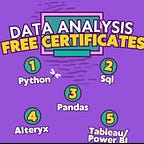Data Science Day 2: Logistic Regression
Let's learn Logistic Regression in detail
30 Days of Data Science Series: https://t.me/datasciencefun/1708
## Concept
Logistic regression is used for binary classification problems, where the outcome is a categorical variable with two possible outcomes (e.g., 0 or 1, true or false). Instead of predicting a continuous value like linear regression, logistic regression predicts the probability of a specific class.
The logistic regression model uses the logistic function (also known as the sigmoid function) to map predicted values to probabilities.
## Implementation
Let's consider an example using Python and its libraries.
## Example
Suppose we have a dataset that records whether a student has passed an exam based on the number of hours they studied.
# Import necessary libraries
import numpy as np
import pandas as pd
from sklearn.model_selection import train_test_split
from sklearn.linear_model import LogisticRegression
from sklearn.metrics import confusion_matrix, classification_report, roc_auc_score, roc_curve
import matplotlib.pyplot as plt
# Example data
data = {
'Hours_Studied': [1, 2, 3, 4, 5, 6, 7, 8, 9, 10],
'Passed': [0, 0, 0, 0, 1, 1, 1, 1, 1, 1]
}
df = pd.DataFrame(data)
# Independent variable (feature) and dependent variable (target)
X = df[['Hours_Studied']]
y = df['Passed']
# Splitting the data into training and testing sets
X_train, X_test, y_train, y_test = train_test_split(X, y, test_size=0.2, random_state=0)
# Creating and training the logistic regression model
model = LogisticRegression()
model.fit(X_train, y_train)
# Making predictions
y_pred = model.predict(X_test)
y_pred_prob = model.predict_proba(X_test)[:, 1]
# Evaluating the model
conf_matrix = confusion_matrix(y_test, y_pred)
class_report = classification_report(y_test, y_pred)
roc_auc = roc_auc_score(y_test, y_pred_prob)
print(f"Confusion Matrix:\n{conf_matrix}")
print(f"Classification Report:\n{class_report}")
print(f"ROC-AUC: {roc_auc}")
# Plotting the ROC curve
fpr, tpr, thresholds = roc_curve(y_test, y_pred_prob)
plt.plot(fpr, tpr, label='Logistic Regression (area = %0.2f)' % roc_auc)
plt.plot([0, 1], [0, 1], 'k--')
plt.xlim([0.0, 1.0])
plt.ylim([0.0, 1.05])
plt.xlabel('False Positive Rate')
plt.ylabel('True Positive Rate')
plt.title('Receiver Operating Characteristic')
plt.legend(loc="lower right")
plt.show()
## Explanation of the Code
1. Libraries: We import necessary libraries like numpy, pandas, sklearn, and matplotlib.
2. Data Preparation: We create a DataFrame containing the hours studied and whether the student passed.
3. Feature and Target: We separate the feature (Hours_Studied) and the target (Passed).
4. Train-Test Split: We split the data into training and testing sets.
5. Model Training: We create a LogisticRegression model and train it using the training data.
6. Predictions: We use the trained model to predict the pass/fail outcome for the test set and also obtain the predicted probabilities.
7. Evaluation: We evaluate the model using the confusion matrix, classification report, and ROC-AUC score.
8. Visualization: We plot the ROC curve to visualize the model's performance.
## Evaluation Metrics
- Confusion Matrix: Shows the counts of true positives, true negatives, false positives, and false negatives.
- Classification Report: Provides precision, recall, F1-score, and support for each class.
- ROC-AUC: Measures the model's ability to distinguish between the classes. AUC (Area Under the Curve) closer to 1 indicates better performance.
Best Data Science & Machine Learning Resources: https://topmate.io/coding/914624
Credits: https://t.me/datasciencefun
Like if you need similar content 😄👍
Hope this helps you 😊
